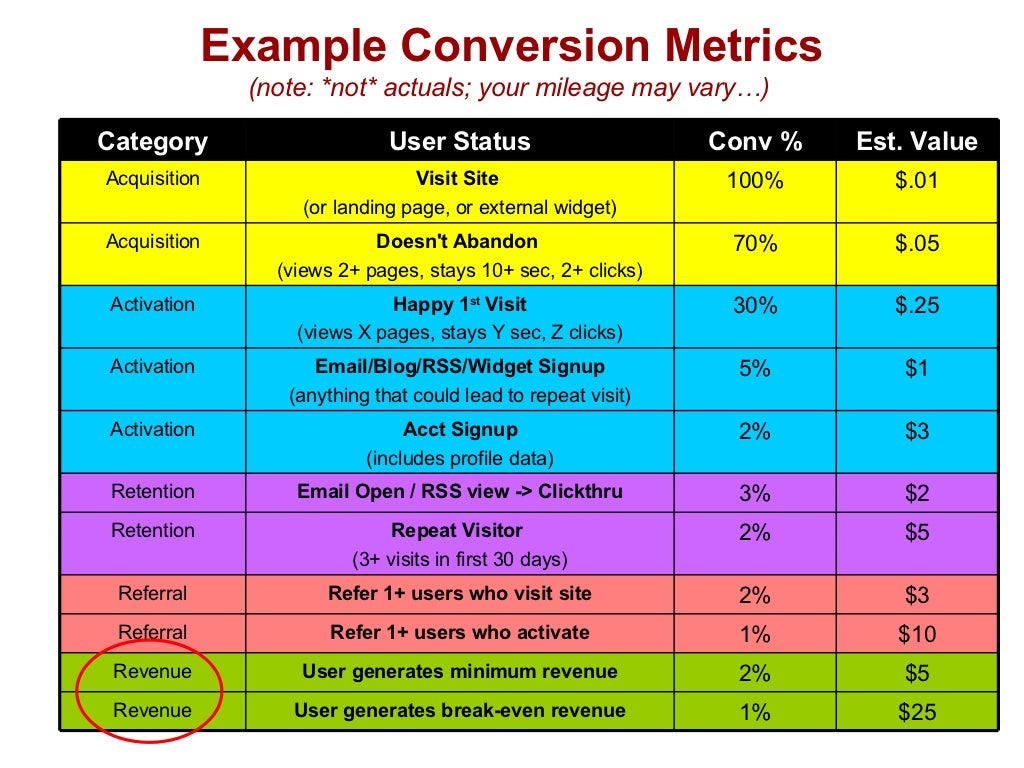What
Pirate Metrics are a Customer Lifecycle framework that helps think through the five most important stages of Product development and growth: acquisition, activation, retention, referral, and revenue. It provides guidance to develop metrics for each of these stages and a structure for implementation and evaluation.
Why
- Generate a set of metrics for the whole customer lifecycle
- Deepen understanding of the success criteria for a product
- Gather input and feedback for go-to-market and scaling strategies
How
- Number of participants: alone or in a small team
- Time needed: a few hours (initial definition) to weeks and months (go-to-market and scaling)
Every customer lifecycle can be divided into the following successive phases, whose first letters make up the acronym AARRR:
- Acquisition: people discover your product
- Activation: they take the actions you want them to
- Retention: activated users continue to engage with the product
- Referral: users like the product enough to tell others about it
- Revenue: users are willing to pay for the product
Success in these phases can be measured by individual metrics, specifying how many of the originally targeted people stay with the product in each phase. Here is an example:

For each of these conversions, you can estimate a value that is ultimately derived from how much contribution this conversion makes to the generated revenue.
While each customer lifecycle starts with Acquisition, optimising your product and its marketing shouldn’t: If you pour in ad spending, for example, you might improve your Acquisition metric – but if the people discovering the product won’t continue to engage with it, this spending will be largely wasted. As soon as you cut it off, the product’s sales funnel will run dry.
Therefore it’s important to start with defining and optimising Retention: This measures if users are happy with the product, i.e. if it solves their problem in a way preferable to the alternatives. Only when this is validated, i.e. the product has achieved Problem/Solution Fit, you move on to optimise the next phases, Activation and Referral. Validating these means verifying that onboarding and recommendation work, enabling sustained growth of your customer base. After this, your Revenue model needs to validated; if it is, the product has achieved product/market fit. Only after that it is reasonable to start spending on and optimising Acquisition, i.e. non-organic growth.
So the way to learn about and optimise your customer lifecycle is not from beginning to end, but from the inside out – starting with product use and focusing on marketing last.
In order to validate your product’s performance in each of the phases, you will need to experiment and test continuously. Here Pirate Metrics have a lot of connections to other methods from Lean Startup and Customer Development that help with continuous validated learning.
Tips
- Define and quantify success criteria. A good metric should generate a number you can evaluate according to a predefined benchmark.
- Keep your metrics simple and product-related. Generic and overly complicated metrics won’t help learn and optimise.
- Measure customer behaviour in cohorts, i.e. segment customers into groups that were acquired in the same time period and observe their behaviour over time. Only if you can connect customer engagement (or its lack) to changes in the product or its marketing you can draw conclusions about causality, i.e. about what works and what doesn’t. If you can’t, you’re probably using vanity metrics.
- Use either simple analytics tools and custom spreadsheets for cohort analysis, or software specifically designed for it.
Where
- Can process output of: Design Studio, Kano Model
- Can feed input to: Customer Journey Map, Problem Statement, Kano Model
Caveats
Depending on the business model under consideration, the use of this method can be implicitly exploitative, e.g. when the model is based on exploiting user attention and the metrics measure of well this is done. When using the method, the underlying business model should therefore always be transparent.
Similarly, by focusing exclusively on the customer lifecycle, other stakeholder interests might get backgrounded. The use of the method therefore needs to be thoroughly contextualised.
Provenance
Pirate Metrics, also called the “AARRR method”, were developed by Dave McClure and first presented in his talk “Startup Metrics for Pirates” in 2007.
Although the process it describes looks linear and initially there was no specific focus on any part of the lifecycle, the strong emphasis on testing and iterating quickly made Pirate Metrics part of the emerging Lean Startup movement. Consequently the practice shifted to starting iterations with the Retention phase, trying to establish Product/Market Fit before scaling.
An adaptation of the framework by Gabor Papp that takes this shift into account is called “RARRA”.